By Sue Williams
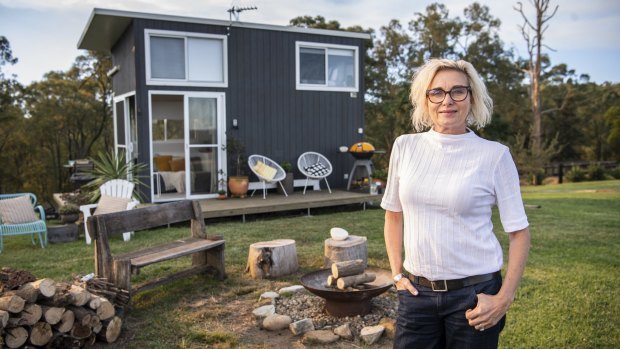
'COVID changed everything,' says Margo Keenan, who installed a tiny home on her Malniri Park thoroughbred horse farm at Freemans Reach on the Hawkesbury.Credit: Wolter Peeters
Tiny houses have become big business in the holiday industry with COVID-19 luring many travellers into the countryside to try out simpler, more minimal living in back-to-nature surrounds.
Many hosts can't keep up with soaring demand to rent the super compact 14.4 square metre spaces from people eager to get away from it all – including their possessions.
"We thought we'd maybe get bookings for weekends, but COVID changed everything," says Margo Keenan, who installed a tiny home on her Malniri Park thoroughbred horse farm at Freemans Reach on the Hawkesbury, about an hour's drive from Sydney.
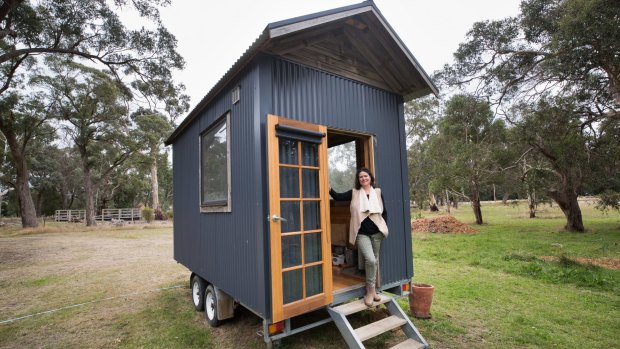
'It's become so busy,' says Vanessa Jeffcoat of her Ardingly Tiny House.Credit: Jason South
"When we opened up again in June after all the lockdowns it went like wildfire and we found sometimes it was being rented out for 28 nights a month. We just couldn't keep up with demand."
It was similar for Vanessa Jeffcoat, who rents one out on her permaculture farm in Newham in the Macedon Ranges, again about an hour from the Melbourne CBD.
"It's become so busy," she said of her Ardingly Tiny House. "I think a lot of people have heard about the concept of tiny houses and COVID has made them think of downsizing to a simpler life and getting back to nature. So they see this as a chance to try it out."
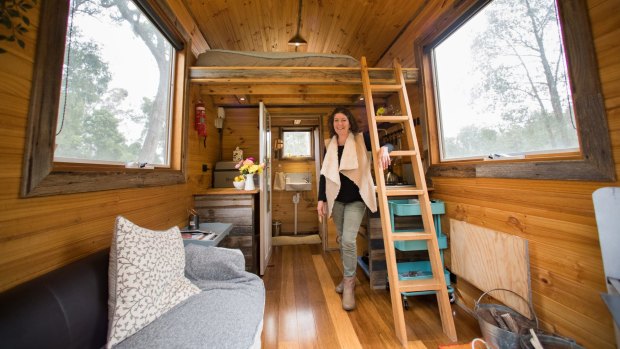
Vanessa Jeffcoat inside her Ardingly Tiny House.Credit: Jason South
Both of their tiny houses are owned and operated by the ecotourist company Tiny Away which owns more than 70 small properties – and rapidly growing - which they place on rural sites in NSW and Victoria, and rent out on a platform similar to Airbnb.
Nightly prices are around $159 or $199 for up to two guests on weekdays, and $179 or $220 on Fridays and Saturdays for the homes which are equipped with kitchenettes, hot showers, air-conditioning and a queen-sized bed, with the company splitting the revenue with the hosts.
Singapore-based Jeff Yeo set up Tiny Away with mates in 2018 after a road trip around Australia but has found business has shot up more than five-fold since the easing of pandemic travel restrictions.
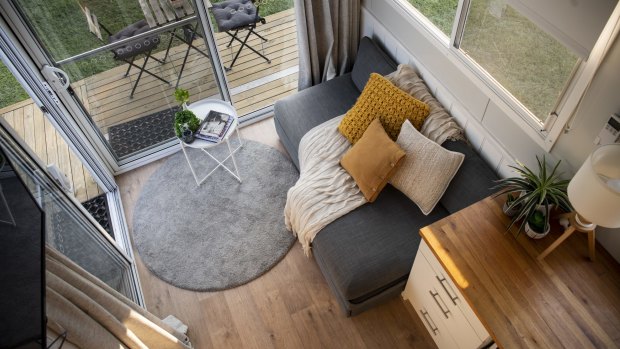
Inside Margo Keenan's tiny house. Many hosts can't keep up with soaring demand to rent the super compact spaces.Credit: Wolter Peeters
"Before COVID, people were renting tiny houses for experiences, like riding horses or harvesting fruit or enjoying amazing views," he said. "But now they're looking for accommodation close to nature, away from crowds, out of cities.
"They want to be in eco-friendly environments so they can enjoy the clean, fresh air and, especially as it's so hard to travel abroad, they want to experience other ways of living. Demand has gone up over 500 per cent since the end of COVID and we're now looking at other places to expand in Australia, and to New Zealand."
Tiny Away is just one of the companies now offering teeny house sustainable stays in the countryside, with others including CABN, Unyoked, In2thewild and Kindled.
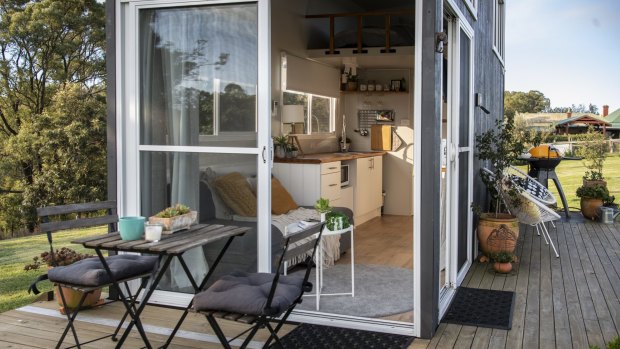
Guests are looking for "accommodation close to nature, away from crowds, out of cities," says Tiny Away found Jeff Yeo.Credit: Wolter Peeters
CABN also started in 2017 and now operates seven houses, or cabins, on a similar partner rentals program in South Australia and Victoria but it plans "to grow significantly". It will both multiply the number of $209-a-night cabins it has, and, ironically, introduce a double-sized, 30-square-metre more luxurious version, with a sunken bath, sauna and three-metre ceilings too, at $595 a night.
"There's now a real drive for people to get out into nature and COVID has played a massive part in that," said CABN marketing manager Shane Laidlaw. "People now want to disconnect from other people.
"One of the last things I would want to do now is go into a dense city and stay at a hotel when you can go off-grid and have a wonderful experience in nature and go to farmers' markets and visit little local restaurants and come back to a cosy cabin."
Other people are taking the tiny home boom into their own hands, and buying their own petite properties to rent out privately on short-stay platforms.
NSW Central Coast builder Grant Emans found demand was so great he moved from constructing regular homes to concentrate solely on creating tiny homes for sale with his business Designer Eco Tiny Homes. Designs range from a 3.6 metre x 2.4 metre studio from $29,250 to a massive place that sleeps up to six at 7.2 metres x 4.8 metres for $151,250. Last year, he made 50 houses; this year it's 80.
"We can't keep up with demand," said his global collaborator, Kylie Emans. "People really like our designs and, since COVID, I'd say 70 per cent of our customers are buying them to rent them out as holiday lets on Airbnb because they've found a lot of people want to go off-grid and try something different for their holidays.
"We've now got 25 people working in our factory and we're expanding and expanding and delivering all over Australia. We've also now opened up in the United Kingdom and America. It's a trend that's turning out to be so popular worldwide."
For host Margo Keenan that popularity has been hard to manage. She's now cut back the number of nights she'll admit guests to cope. "I've had to pull back a little bit to average 15 to 18 nights as I also have the farm to run," she said.
"I was looking for something that would provide extra income for the farm, but I had no idea how many people would like the idea of more minimal living, cutting out the frills and sitting around the fire, having a glass of wine, watching the sunset and just chilling out. We've had some guests come a long way, and some from two suburbs away."
See also: Hotels forced to keep some rooms closed due to lack of staff
See also: Japanese high-tech toilets the new must-have for Australian luxury hotels
Sign up for the Traveller newsletter
The latest travel news, tips and inspiration delivered to your inbox. Sign up now.